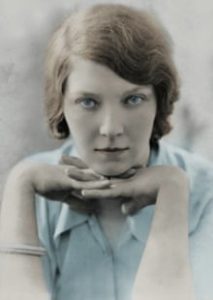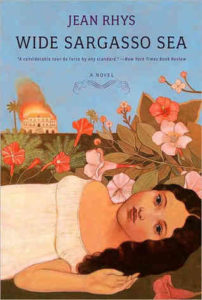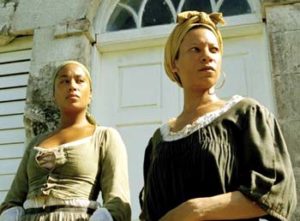
Jean Rhys’s canonical work the Wide Sargasso Sea, written in 1960 portrays the tendency of racial and sexual exploitation deeply rooted in the heart of Western civilization and literature. It is a response to Charlotte Brontë’s Jane Eyre, specifically its visceral treatment of Mr. Rochester’s wife Bertha.
The Wide Sargasso Sea Analysis
Rhys in her novel points towards a horrifying reality that may lie behind a man’s claim that a woman in ‘mad’. In the process, she also humanises Brontë’s grotesque creation, the archetypal, and extremely symbolic figure of the ‘mad woman in the attic’. It is a powerful cry of rage against racial injustice and a crippling revelation of personal sadism.
The novel is set in 1800 explores the complex social and racial history of the West Indies along with sexualised racism and issues related to Victorian paternalism. Rhys imagines the time when Rochester met Bertha. Bertha is a Creole – a naturalised West Indian of European descent.
The Emancipation Act has been passed which freed the slaves but compensated the owners for their ‘loss’. England and France are the two most powerful colonisers competing for new colonies, while Spanish Colonisers are history and many other formerly lucrative estates are in decline because there is no exploited labour and a fall in the sugar market.
The novel is narrated by Antoinette (Bertha’s real name) and Rochester. It has three settings – Antoinette’s crumbling family estate, Coulibri; an unnamed honeymoon house on an island; and ultimately the attic room where Antoinette is imprisoned in Thornfield Hall in England.

The Wide Sargasso Sea Summary of Story
Part One – Forced to live in poverty since the abolition of slavery, Antoinette’s mother Anette decides to marry a wealthy Englishman, Mr. Mason, who in turn is planning to exploit her. The freed slaves, on the other hand, are angry at the retuning prosperity of their oppressors and burn down Anette’s house, killing Antoinette’s mentally challenged brother, Pierre.
Anette had already been struggling with her mental health up until this point. The death of her son now weakens her further and affects her sanity. Mason sends her to live with a family who torments her until the day she dies. Antoinette does not see her mother again.
Part Two of the book alternates between the narrative of Antoinette and her husband during their honeymoon trip to Granboise, Dominica. Gradually a mutual suspicion develops between the couple, which becomes the beginning of Antoinette’s downfall.
Daniel, a man who claims to be Antoinette’s illegitimate half-brother also contributes to this. He impugns Antoinette’s reputation and mental state and demands money to keep quiet. Antoinette’s husband, although pretends to believe her stories about her family and her past initially, slowly turns manipulative and abusive towards her.
He starts calling her Bertha instead of her real name. He becomes unfaithful and openly flaunts his infidelity in front of Antoinette to cause her further pain. With her marriage falling apart Antoinette’s already precarious mental state starts crumbling even more. She flees to Christophine’s place, the old nurse who raised her.
Antoinette requests Christophine to provide her with an obeah potion that can reignite her husband’s love for her. But her husband rejects help from Christophine and takes Antoinette away to England.
Part Three, the shortest part of the novel is solely from Antoinette’s point of view. Renamed ‘Bertha’ by her husband, she is confined to the attic of Thornfield Hall, which she calls “the great house”. Her relationship with Grace Poole, the servant appointed to guard her, is explored along with her devastating life her husband.
He makes empty promises to visit her more often but comes to her less. He has affairs with a lot of other women and the young governess. Antoinette indeed has lost her sanity and has no idea of how long she has been confined. However, she thinks of ways she could escape but in the process pulls even more trouble for herself.
Written in the stream-of-consciousness method, Antoinette is shown to have been dreaming of flames that engulf the house and free her from her life of imprisonment. She believes it is her destiny to fulfil the vision and escaping from the room, she sets the house on fire.
Rhys brilliantly conveys the idea that certain traumas like that of slavery are inexplicable and deliberate forgetting is a trauma response but also a survival strategy. When Anette’s horse id poisoned by ex-slaves, Antoinette says, “I thought if I told no one it might not be true.” Anette wants to forcefully disbelieve that one is “abandoned, lied about, helpless.”
Antoinette’s experience is exactly the same as her mother’s. The novel traces a repetitive history with remarkable intensity, as of laying down a curse.

Anette was blamed by other white women for being the reason being her first husband, Mr. Cosway’s death. Cosway was an alcoholic whose sugar estate failed because of economic decline and the slaves being freed.
The rape of slave women by white owners like Cosway and the women’s forced pregnancy are written-off as ‘old customs’.
The judgments, though, always fell in those women and the children they bore. In the back-story involving Cosway and Anette and the gossips she was subject to, we find many of the themes laid down that the novel deals with – men’s sexual exploitation of women; racist sexual abuse; a community’s responsibility in protecting the perpetrator; the horror and prejudice of sexual mixing and the perpetual anxiety about race, colour, status and legitimacy.
The story of Anette and Mr. Mason provides us with a horrific preview of what is about to happen with Antoinette. Right from the time of their marriage, Mason ignores and dismisses everything that Anette says. Everything she warned him about, from the slave mutiny to them burning their house, comes true and her son is killed in the incident. But Anette can only feel angry and lose her sanity out of sorrow.
The fire that destroys Mason’s house and kills Pierre is itself a premonition of the fire that kills Rochester’s house in as well. Both fires are expressions of pain and despair of the people started them. The novel, in fact, is full of fire images with imparts an unpleasant, claustrophobic frisson to it.
As Antoinette grows up, the readers know that her life is going to change permanently for the worse. Mr. Mason tells her, “You can’t be hidden away all your life.” Just like her mother, Antoinette can also guess what can happen to her and feels an immediate ‘dismay, sadness, loss’. Anette’s money and property have passed into male hands already and the next wave of selling off of women has begun: Mr. Mason is going to sell Antoinette.
Slowly, Antoinette’s dreams begin directly to reference events from Jane Eyre, as if Brontë’s novel has already set down. Antoinette sees her own living death in Thornfield Hall which is expressed at times like when she says, “when I go up these steps. At the top” or when she claims, “I have slept there many times before, long ago.”
This is one of the many grim references to the cultural legacy of Brontë’s novel where the hideous Bertha is read about, feared, and hated as an obstacle to Jane Eyre’s happiness. Antoinette goes on to become a legend, like suffering women martyrs she is taught about in her convent school.
Antoinette, therefore, reflects a gamut of complex and intertwined issues, such as man’s inhumanity towards the woman; repressed sexuality in the Victorian age; women’s unvoiced but powerful anger; the ugly truth about colonialism; and a family secret is hidden away to preserve the appearance of decorum.